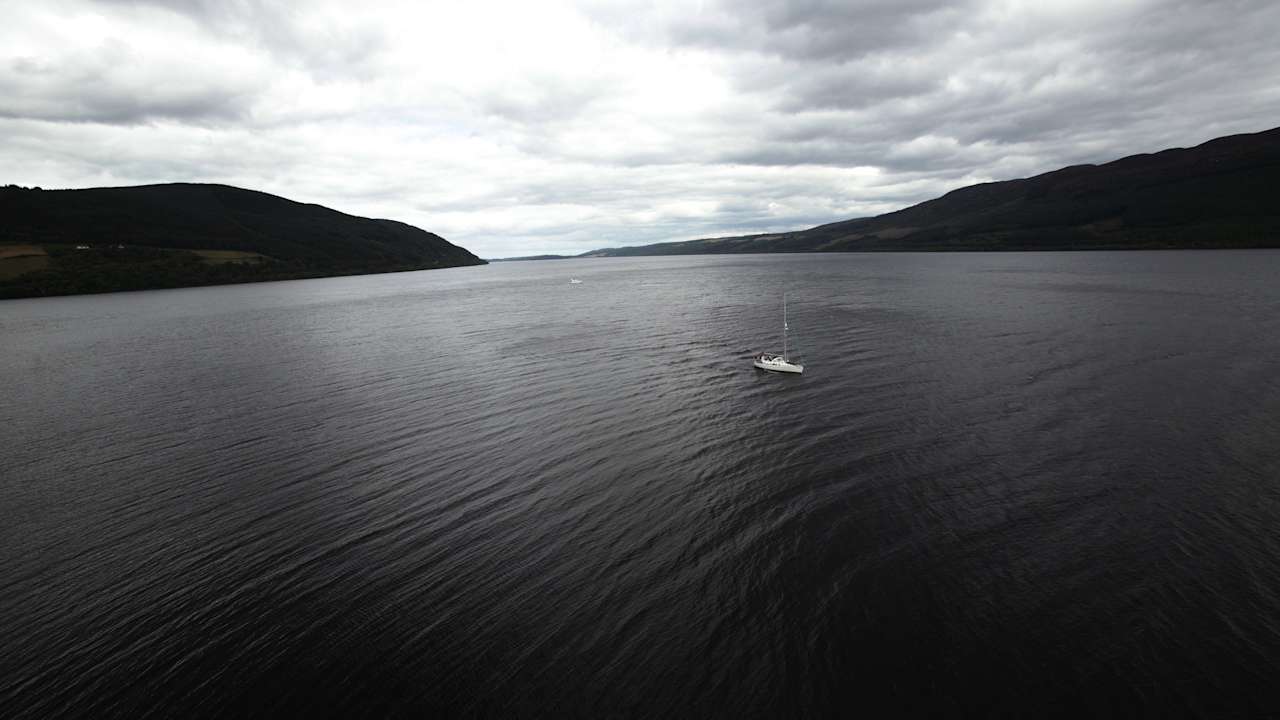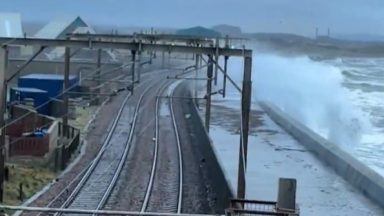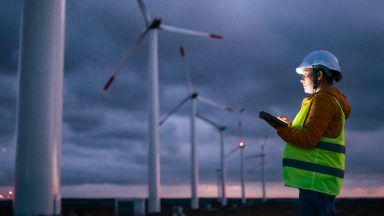ITV News Science Correspondent Martin Stew visits Switzerland to find out whether Scotland can adopt its newest hydro pump technology
Did you know the Loch Ness holds more water than all the rivers, lakes and reservoirs in England and Wales combined?
What if you could use that natural resource to store the energy created by renewables?
At least three private firms are planning to do just that. Each has different plans, but in essence they all want to move water between the loch and reservoirs higher in the mountains – using the power as it flows back downhill to generate electricity.
This would enable excess electricity produced by wind, water and solar to be stored for times when the sun isn’t shining or the wind’s not blowing.
To see how it works, I travelled to Nant de Drance in the Swiss Alps, a hydro pump storage “water battery” that opened two years ago.
The scale is enormous. Two reservoirs, one 500m higher than the other, connected by a giant pipe channeled through the mountain.
To get to the cavernous turbine chamber 600 metres underground, we had to drive through 6 kilometres of tunnels.
What is pump hydro storage?
When there is excess electricity in the grid – power is used to pump water from a lower reservoir to a connected reservoir on higher ground.
When the electricity grid needs more energy – for example on a dull calm day when solar and wind turbines aren’t producing more power – the water is released down a giant pump.
The gravitational force of the water flow from the high reservoir turns huge turbines generating electricity.
At full flow, enough water passes through the pipe to fill an Olympic sized swimming pool in 10 seconds. It’s able to produce enough electricity to power one million homes for 15 hours.
That’s nearly the population of Edinburgh and Glasgow combined.
Building on this scale isn’t cheap. According to Roderick MacLeod, Director of Glenn Earrach Energy, his proposed project would cost £2 billion pounds and take eight years to build.
Projects of this scale are usually government funded but it’s private companies taking the lead.
To enable them to borrow the money to build, they’re awaiting details of a “cap and floor” scheme which would see the government underwriting a minimum income.
Mr MacLeod told me Loch Ness is the ideal place to build.
“The topology is ideally suited to these projects with Lochs high up and Lochs low down and at the same time this topology is situated right at the centre between all of the wind power that is being generated.”
But what about the environmental impact? Loch Ness is a site world renowned for its beauty.
“It shouldn’t look any different at all from the Loch itself” Mr MacLeod told me. “You might see from certain angles the dam. The dam itself is like a continuation of the hill so it will be covered with grass and heather and will disappear fairly quickly.”
Critics are also worried about the impact fluctuating water levels could have on fish stocks. Engineers from Glenn Earrach’s project say water levels wouldn’t move more than a foot.
The UK government is committed to decarbonising power production by 2035.
Without storing excess renewable energy, that will be almost impossible. Winning over critics of building on the banks of Loch Ness may prove to be equally challenging.
Follow STV News on WhatsApp
Scan the QR code on your mobile device for all the latest news from around the country




























